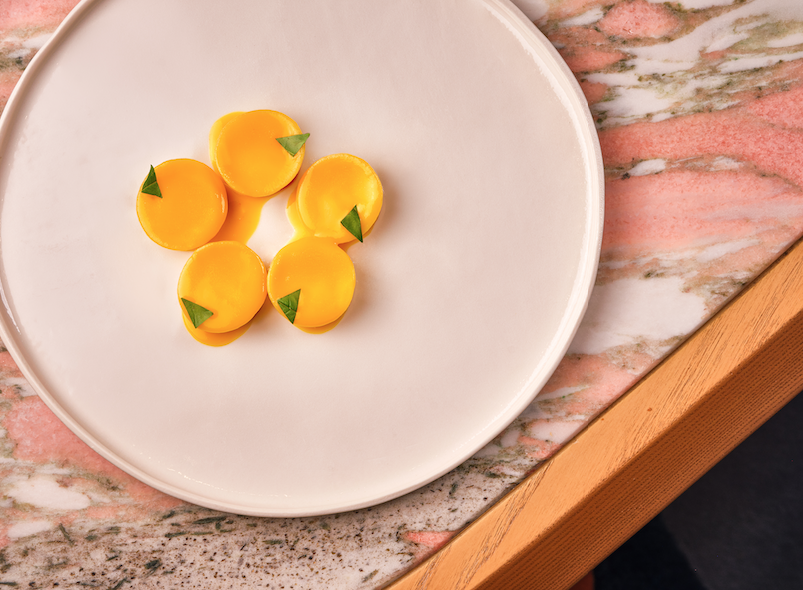Bernar Venet on his foundation and art collection
Oct 14, 2024
French artist-collector Bernar Venet speaks to Dionne Bel about the 10th anniversary of his eponymous foundation in a picturesque region of southeastern France, where his historical and recent pieces and extensive art collection are set in the heart of nature

Bernar Venet is unstoppable. At 83 years old, he’s at the apex of his success. His Convergence sculpture of 14 towering Corten steel arcs was commissioned for the Paris Olympics, he recently signed representation of his photography with Parisian gallery Bigaignon, and he will open a major survey show at Phoenix International Media Centre in Beijing at the end of the month featuring 160 works that cover his 65-year career.
The exhibition sees him plunge into the realm of digital art for the first time, proposing a series of large- format paintings printed by machine using UV ink that gives physical form to his new generative artworks. Then, in November, he will launch Event, his first generative art collection of 500 algorithmic sculptures, with Sotheby’s New York. Always on the go and filled with countless ideas, Venet embodies a steadfast sense of purpose, with so much to do and so little time. Pushing the boundaries of art is his sole raison d’être, whether in sculpture, painting, photography, performance, poetry or design.

This year, the trailblazing artist is marking a significant milestone with the 10th anniversary of
the Venet Foundation in Le Muy, his nine hectares of paradise in the Provençal countryside comprising a former mill and factory, a sculpture park and a gallery, which has become a vital cultural hub attracting international visitors exploring the south of France’s burgeoning art scene every summer.
The work of a lifetime and an open-air museum, the foundation showcases Venet’s monumental sculptures and a rich collection of minimal and conceptual art by the likesofArman,LarryBell,AnthonyCaro,Christo,Tony Cragg, Richard Deacon, Dan Flavin, Donald Judd, Anish Kapoor, Phillip King, Sol LeWitt, Robert Motherwell, Frank Stella and James Turrell, many of them his friends.

In the gallery hosting temporary exhibitions, Mexican artist Stefan Brüggemann has taken up residence, presenting a radical graffiti intervention for his second solo show in France, which was curated by Jérôme Sans. Venet, too, continues to experiment with his themes of predilection – entropy, gravity, instability, chance and uncertainty – which led to his latest sculpture of 20 colossal arcs that he toppled over with his bare hands, currently on view in the factory space. Perpetually unsatisfied, Venet still has so much to prove and is obsessed with how he will be remembered, but his foundation will undoubtedly live on long after him.
Also see: #review: Is Joker: Folie à Deux to be hyped or hated?

What inspired you to establish the Venet Foundation in 2014?
The idea to open a foundation came to my mind as a way to make sure that my work and my collection would be permanent, that it would last, because it’s so ridiculous to spend your life building such a thing and then when you die, your kids sell the property and part of the collection because they don’t have a choice. My wife and kids have accepted the idea that they are not going to inherit it.
It’s so much better like that since it will remain the way it is. They will come, sleep here and have all the artworks around them. One of my granddaughters could become the director of the foundation. It’s just perfect.

You built up your foundation’s art collection with works by your artist friends, like a journal of your life and your friendships, but many of them have since passed away. Do you still collect today?
No, when you come to Le Muy and see the foundation and my collection, it’s really a family story. These were the artists I exhibited with. They were of my generation, except they were all older than me and they have passed away. I was the youngest one, I took lessons from these guys, and today everybody is together here at my foundation.

I don’t have an eye to see what’s very interesting today. In 1968, if you had asked me to name 10 artists who were going to be at the top level in art history, I could not make a mistake. But today, it’s complete confusion. At the beginning of the 20th century, all the big artists were in France, and that lasted until 1955. Then the Americans took over. It was clear it was one generation after the other: the American abstract expressionists, then pop art, then minimal art. It was simple and it was just a matter of having a good eye and seeing which ones were the best. And I had the eye. That’s why I acquired a Flavin for US$1,000 that my friend bought two years ago for US$1.4 million, and a Judd for US$3,000 that he paid US$2 million for.

How did you come to acquire the minimal artworks from Wolfgang and Anne Titze’s vast collection?
They spent the weekend at my foundation and saw my collection: pieces of steel they’re supposed to walk on, the compression of a car, felt on the wall, stones on the floor, neons coming out of the wall. Then they became one of the top collectors in the world. They have [Georg] Baselitz, [Kazuo] Shiraga, Judd, Flavin, Stella.
Now each time they hold an exhibition of their collection, Wolfgang makes a speech saying he had a fantastic life until one day he met me and started to have a new life. They have one son, but he’s not into art, so they called me and said they wanted to give me 500 pieces. I said it’s too much. They said I can choose what I want and I’ve already taken what I want because the collection will be divided into three parts: one in Switzerland, one in Austria and one in France here. So it’s going to be a big thing.

Tell me about your expansion plans for your foundation.
I’m buying land. I’m buying everything I can, from all my neighbours. Right now, I’m buying a big piece, which is going to really make a difference. I’m very ambitious for Le Muy. [Fondation Claude Monet] in Giverny is fantastic with an incredible garden. You have the house of Monet and you can visit the house, but when you go inside, you see reproductions of paintings. They’re not the real thing. To go to Giverny, you take a train from Paris. Le Muy is located on the French Riviera. Everybody goes there, and they pass six minutes away from my place when they’re on the highway.
Secondly, people will see not just a beautiful garden, but real and major artworks by Sol LeWittt, Carl Andre, Larry Bell, Frank Stella, Anish Kapoor – all the big names. It’s as if Monet had big paintings of Van Gogh or Renoir, which was not the case. So the adventure is huge and it’s going to grow and grow, and, in the future, it’s going to be a huge success.
Also see: #review: Is The Queen of Villains on Netflix a stream or a skip?





























